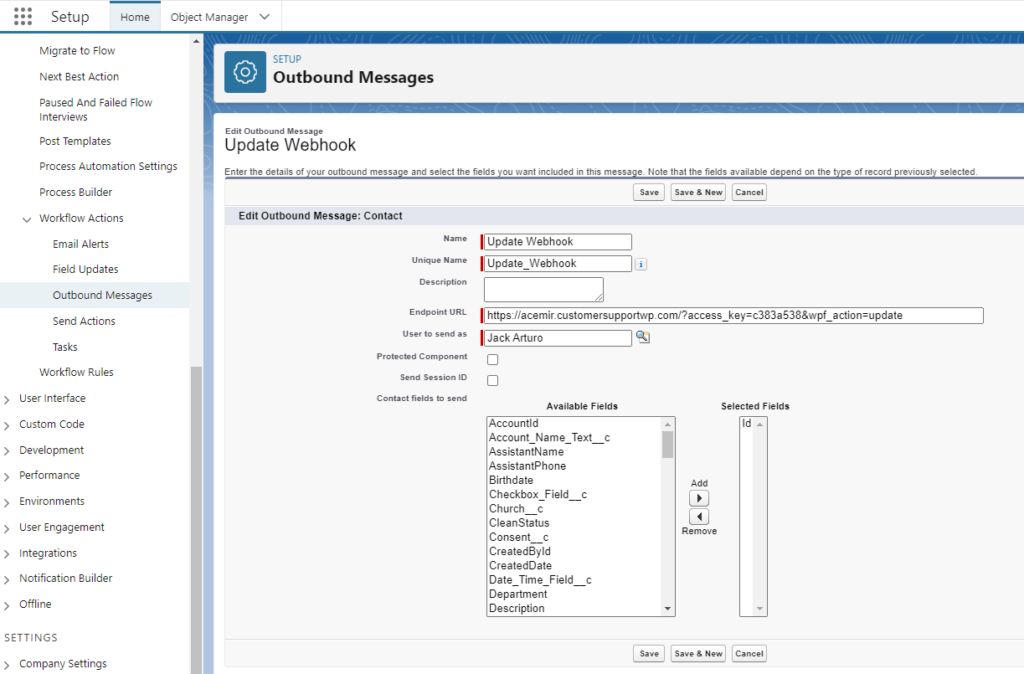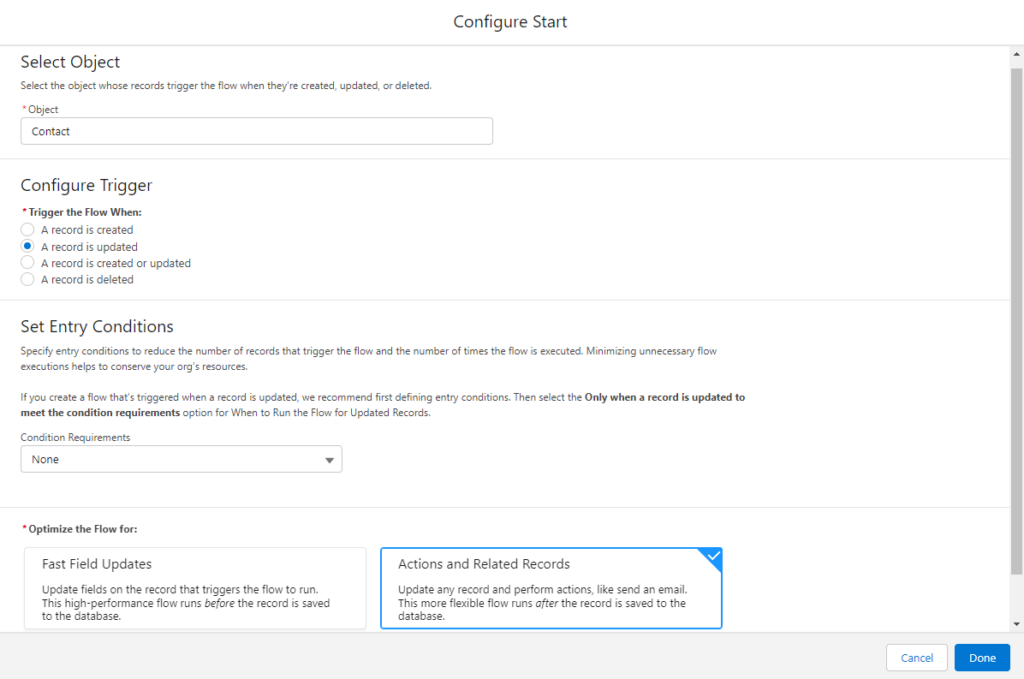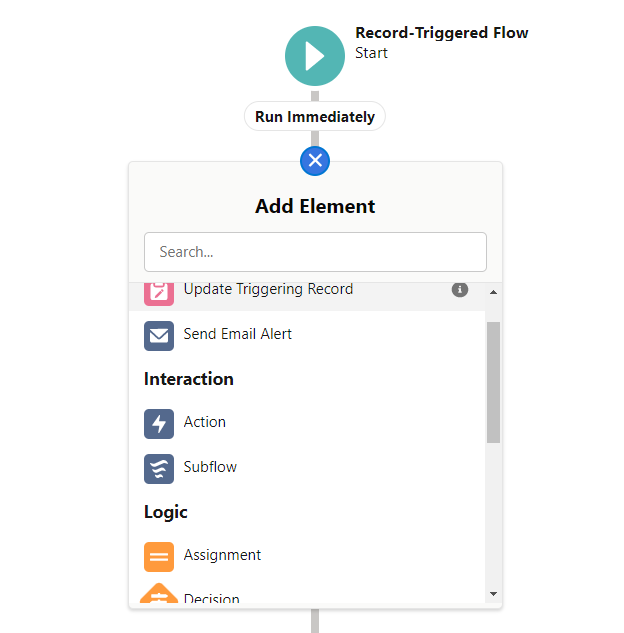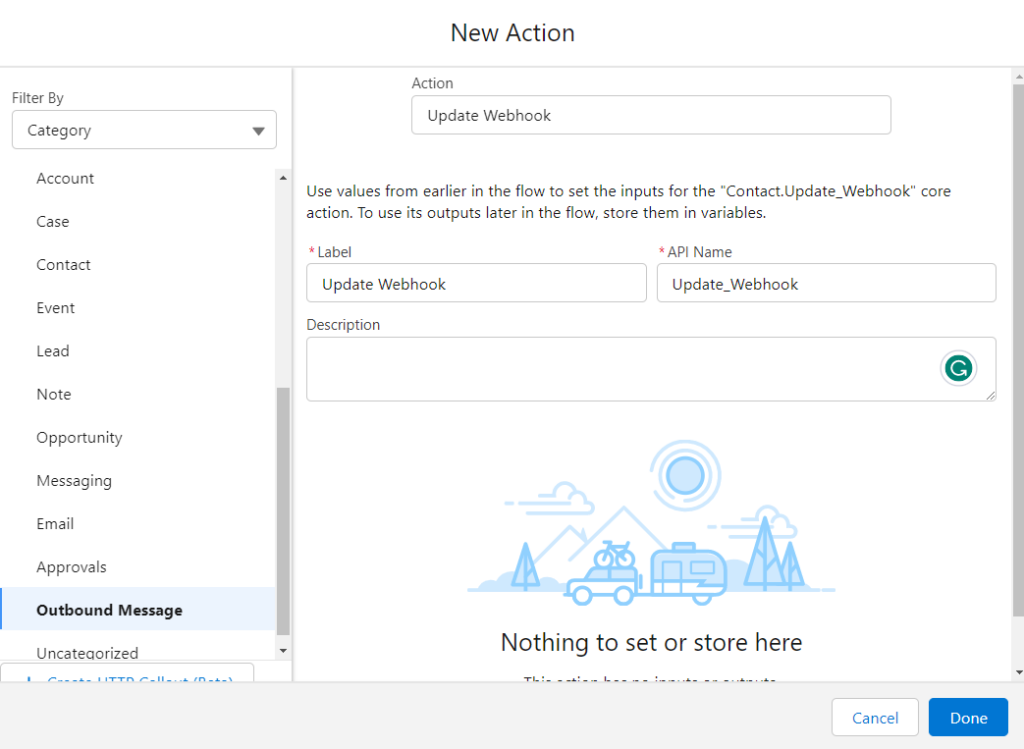#Overview
You can use Flows and outbound messages in Salesforce to send data back to your WordPress site using WP Fusion. Using outbound messages you can create new users on your WordPress site based on conditions in Salesforce, or update existing users’ metadata and tags.
#Getting started
First, head to Workflow Actions, in the Salesforce setup and an action of type Outbound Message.
For the Endpoint URL put the URL to your site, following the formats described below. In this example we’re using the “update” method.
Give your outbound message a name and save it.
Then create a Flow in Salesforce by navigating to Setup » Process Automation » Flows.
In the start conditions, select Contact as the object, and choose when the flow should be triggered.
You can optionally set entry criteria— for example only contacts who have a specific user role, or a picklist value. In this example we will be syncing all contact updates with WordPress.
Add an action to your flow, and from the actions menu, select Outbound Message.
From the dropdown, select the outbound message you created in the first step. Save and activate the Flow.
That’s it! When a contact is edited in Salesforce (and, optionally, meets the criteria), the outbound message will be triggered to tell WP Fusion to load their latest fields and tags.
You can test this by manually editing any contact, or by using the Flow debugging tool.
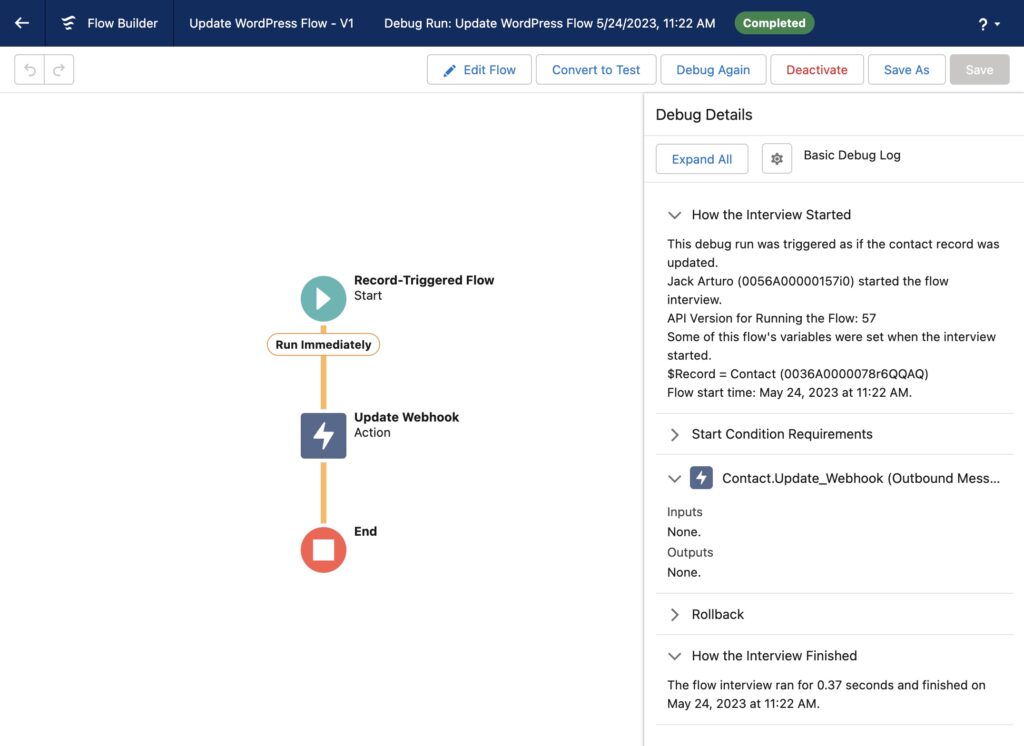
#Webhook URL options
#To update a user’s tags
To update an existing WordPress user’s tags from the contact record, the URL for the webhook should look like the following:
https://mydomain.com/?wpf_action=update_tags&access_key=YOURACCESSKEY
#To update a user’s tags and meta data
To update a user’s tags and pull any new meta data from Salesforce for that contact, the URL for the webhook should look like the following:
https://mydomain.com/?wpf_action=update&access_key=YOURACCESSKEY
#Create a new user
To create a new user, use the following URL:
https://mydomain.com/?wpf_action=add&access_key=YOURACCESSKEY
You can also specify additional parameters in user creation. For example, to send the user a welcome email containing a link to log in on your site, use the following:
https://mydomain.com/?wpf_action=add&access_key=YOURACCESSKEY&send_notification=true
You can also specify a specific user role to be assigned to the new user. For example, to set the new user to the “customer” role, use the following:
https://mydomain.com/?wpf_action=add&access_key=YOURACCESSKEY&role=customer
Note that you have to have registered a “customer” role on your site for this to work. By default users will be assigned the role of “subscriber”.
The add method will update a user if an existing user already exists. It will not create a duplicate user.
user_login and user_pass on your website, the new users will be given the usernames and passwords stored in their Salesforce contact record.#User passwords
New user accounts will be created with an automatically generated password. If you’d like to use this password in your email marketing, you can send the password back to Salesforce after it has been generated.
In the Webhooks section of the General settings tab, check the box for Return Password, and select a field in Salesforce where the password should be stored.
After a new user is created, their automatically generated password will now be saved back to their contact record, and you can use a merge field to include it in an email. The username will be the contact’s email address.
